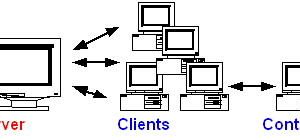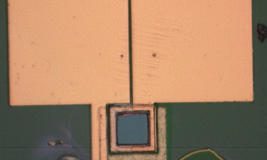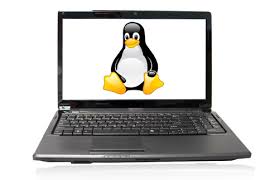Mark Bolzern talks about a recent trip spent promoting Linux and Flagship, the product he sells for Linux and other Unix-like systems.
Mark Bolzern is the President of WorkGroup Solutions, Inc, a company selling the FlagShip CA-Clipper language product, and is also a board member of Linux International. When we heard that he was taking a tour promoting Linux, we asked him to share that experience with our readers.
LJ: I understand that you just completed a tour to promote Linux and FlagShip. Where did you go?
Mark: I started with the CA-Clipper Users’ group in Detroit. I then went to Boston and met with magazine editors out there, including Byte, Information Week, and a few others. I also met with several well-known industry analysts while I was there. My next stop was Cleveland for a presentation to the Greater Cleveland Clipper Users’ group. Then I went to Chicago and spent time educating our PR firm on Linux. The last leg included presentations to Clipper users’ groups in St. Louis, Jefferson City, and Kansas City. The whole trip took about 3 weeks. I drove my van rather than attempting to fly, because of the equipment I had with me, and because the plane schedules were such that it would have been a lot more hassle to fly.
LJ: Were these normal users’ meetings that you attended, or did you do anything special to bring in other users?
Mark: I had my PR firm put on radio spots and local newspaper and magazine ads. These drew additional people in. Mailings were also done.
LJ: How many people did you introduce Linux to on this tour?
Mark: Hundreds of people saw Linux for the first time, were impressed, and then mobbed me with questions. I purposely did not sell any Linux CDs on this tour, but I gave away quite a few as door prizes. In fact, here is a quote from Mark Schumann, President of the Cleveland group. He e-mailed it to me after I left.
It was nice having you around Cleveland this week. I have to say, Mark, that this is the first GCPCUG Clipper meeting in many months that generated as much excitement among attendees. We’ve had better attendance at times, and also much worse, but not often do people come and watch and think and mob the speaker as they did this week. Nice going!
LJ: What did your presentation to these groups consist of?
Mark: I had a Pentium 90 running WGS Linux Pro and a big monitor with me. I showed them DOOM, fvwm, Workman playing music from CD, and lots of other things going simultaneously. I also compiled FlagShip programs at the same time and showed off some converted Clipper programs. I waxed eloquent on how Linux is “Unix: The Next Generation”, and why Linux and whatever Microsoft does may be the only operating systems within 5-10 years. I presented a history of the computer industry and the role Unix has played. I also drew analogies to other events in human history that happened for the same reasons that Linux is going to. If you think Linux is something now, “you ain’t seen nuthin’ yet!” True revolutions have always had to sneak in through the back door. Heck, that is exactly how PCs and PC LANs got to where they are now. The established powers virtually never see the revolution till it is too late. Look what IBM’s own problem child, the PC, did to them! From #1 in computers & mainframes to being a “me too” clone company, all because they never really understood it. When I worked for IBM, I asked if I could work with the PC shortly after it came out. I recognized the PC as a revolution in the making. IBM told me the PC would never be a mainstream product. They said if I wanted to work with it, I’d have to transfer to Computerland or IBM’s factory in Boca Raton. I quit and went to Computerland.
LJ: What is your “WGS Linux Pro”?
Mark: It is a CD containing the Slackware Linux distribution, along with a number of additional things drawn from the Internet. WGS is specifically targeting the commercial market that present Linux vendors have had difficulty moving into. We provide quality and assurance, not necessarily the latest code. We do not feel that we compete with the InfoMagics, Slackware Pros, and Yggdrasils of the world. We are after people who develop commercial software for commercial use. These are the people who want FlagShip. In the meantime, our PR benefits the entire Linux community. I would wager that all CD-ROM vendors have sold more CDs since we started our activities, partially due to these very activities. I would like for all CD-ROM vendors to have our FlagShip Test Drives and information on their CDs.
LJ: What is CA-Clipper, and what did you present specifically to its users on this tour? How many Clipper users are there?
Mark: There are over 200,000 CA- Clipper users and programmers in the US alone. If you add the similar Fox and dBase products, there are well over 10 million. Clipper is a very popular applications development language worldwide; in fact, it is even more popular outside the US than inside. Just as Cobol is the legacy language to mainframes, CA-Clipper is the legacy language for business applications on the PC. There are millions of business software packages written in it. But Clipper is far more than just a legacy language, it is still a concept leader. Clipper started as a way to compile dBase III programs and then began to add features and functions. When Clipper 5 was released, it was the first seriously object-oriented language for creating business applications. It is now one of the very best languages for developing character-based data-oriented applications. It allows fast prototyping, simultaneously creating robust and easy to maintain code. The programs created can be distributed completely royalty free and with no runtime module necessary. There is a large community of developers of add-on tools and products for Clipper—as many vendors as probably for any other development tool. There is much more information I could pass on, but people can feel free to check out our FTP site for further information, URL ftp://ftp.wgs.com/pub2/wgs/Filelist, or write info@wgs.com. They could also pose questions on the alt.comp.databases.xbase.clipper Usenet forum or the CompuServe Clipper Forum, or call Computer Associates (CA) for information on Clipper.
LJ: FlagShip is CA-Clipper for Unix?
Mark: Yes, call CA and mention Clipper and Unix in the same sentence. They will send you to WGS. When people mention a DOS version of FlagShip to us, we first try to sell them Linux and, if it doesn’t work, we send them to CA for Clipper. So, in summary, FlagShip is an implementation of CA-Clipper for Unix and there is a Linux version of FlagShip at DOS-level pricing. CA-Clipper has been the dominant language for writing and distributing business applications on DOS, so that means Linux and commercial applications usage could merge at light speed! Millions of applications, no muss, no fuss. Lack of a good, inexpensive, royalty-free business applications language and its resulting applications has held the use of Unix back seriously in most businesses. And products like Oracle, Informix, Sybase etc. are far too expensive. [Read the review of FlagShip and dBMAN in this issue of Linux Journal—ED]
LJ: Why do you call Linux “Unix: The Next Generation”?
Mark: I explained that a bit in my editorial last month, A new project or a GNU project? You can look at it this way. Unix is very modular, with the basic concepts being standard in, standard out, and standard error. These are the interfaces used to build a modular operating system in good building block, Lego style. So it is possible, even easy, to replace pieces of Unix as needed. The GNU project of the Free Software Foundation has been around a long time. It is mostly made up of enhanced and bug-fixed replacement utilities for Unix. Over the years, a lot of Unix manufacturers have shipped a lot of broken things, and this simultaneously made the GNU project necessary and possible. As a result, when the Linux Kernel came along, most of the Next Generation Unix was already waiting. Voilá, what we know as Linux. Linux is not new; only the kernel, the assemblage and the name are new. Linux is the result of a generation of bug fixes and enhancements by many very astute technical people, not the least of whom is Linus Torvalds. There is another way to look at it, too. The Internet was built primarily on Unix systems and various utilities that were added to Unix such as TCP/IP. Linux was built largely on the Internet, a child of the Internet, if you please. So Unix, and the Internet are parents of Linux—“Unix: The Next Generation”.
LJ: I noticed that you said earlier that you think Linux may be one of only two operating systems within 5-10 years. Why do you think that?
Mark: Hardware manufacturers used to compete with one another by getting the job done better for customers and by trying to create more powerful systems. Then they started doing operating systems software, programming languages, and applications software. Soon language vendors and applications software companies were born because no one manufacturer could do it all. Unix has now been adopted by almost all manufacturers because their own proprietary OS development cannot keep up. The bigger the manufacturer, the longer it took them to come around. The natural next step is for the OS to become totally independent of hardware manufacturers. There are 4 choices: Unix, Linux, OS/2, and whatever Microsoft does. I list Linux separately because it carries the spirit of Unix forward better than any other implementation. Of the options, Linux actually has the most development resources and a cooperative development environment. In addition, all companies and people have equal access to Linux. Microsoft has more money than the Linux people do, but anytime people are hired for pay and position, rather than for the love of it, there end up being many distracting political hassles. Most Linux people are in it because it is art to them. Neither UnixWare nor OS/2 have these advantages, and as such, are behind. POSIX is a committee standard and Linux may become its best implementation in all respects very soon. DEC’s interest with Alpha machines is a good example of this. I think that as Linux gets more capable, stable, user friendly, easy to install, and has applications available, it may actually take over as the primary OS for all hardware manufacturers, specifically because of its independence. It may become the primary target platform for all applications developers that do not want to compete with Microsoft on Microsoft’s own turf (OS). Linux should not be called a free operating system, it should be called a priceless operating system.
LJ: Thank you very much for taking time for this interview.
 Linux, Linux OS, Free Linux Operating System, Linux India Linux, Linux OS,Free Linux Operating System,Linux India supports Linux users in India, Free Software on Linux OS, Linux India helps to growth Linux OS in India
Linux, Linux OS, Free Linux Operating System, Linux India Linux, Linux OS,Free Linux Operating System,Linux India supports Linux users in India, Free Software on Linux OS, Linux India helps to growth Linux OS in India




